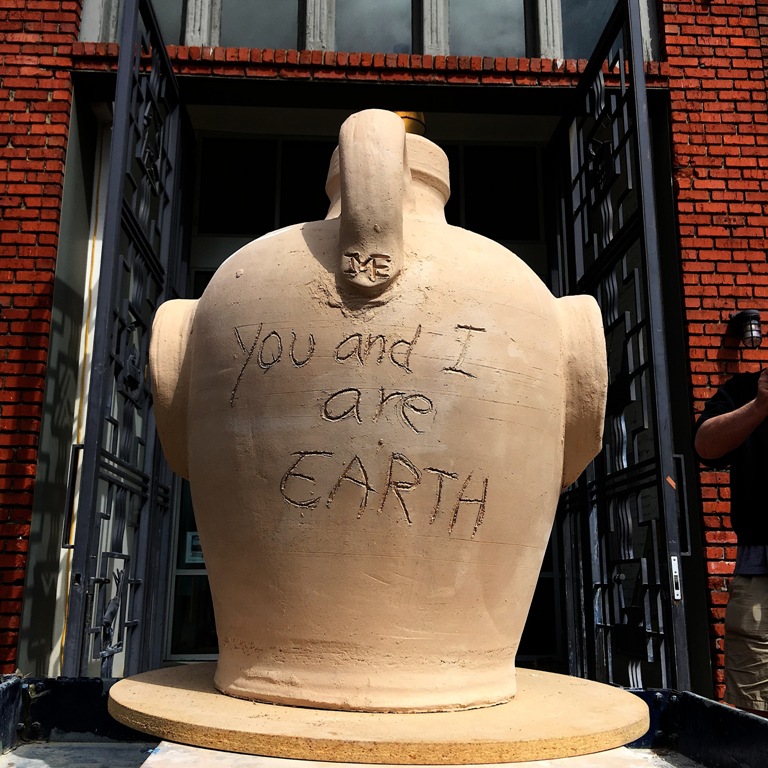
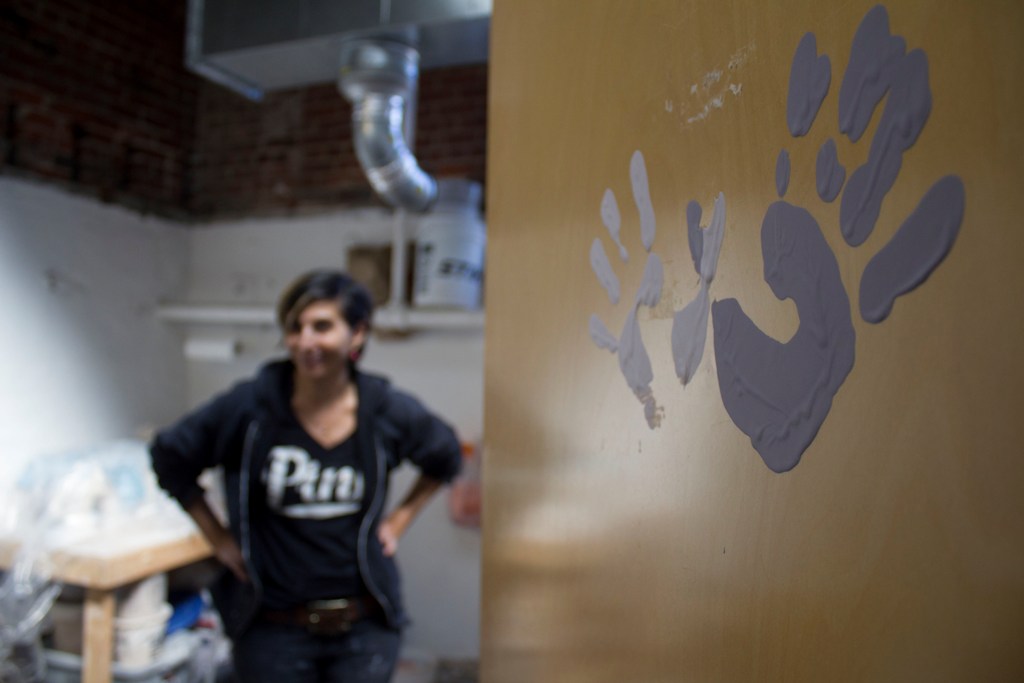
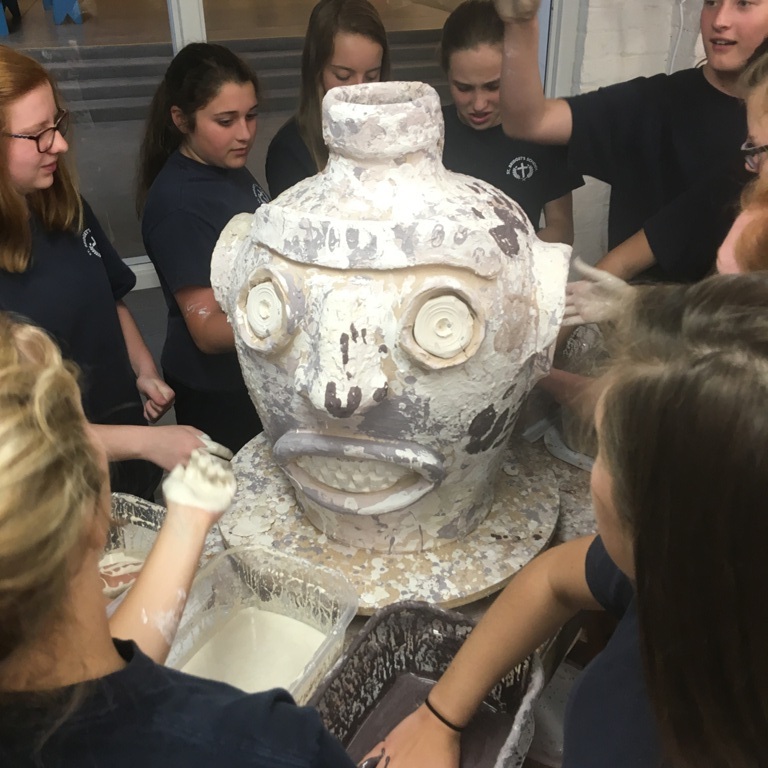
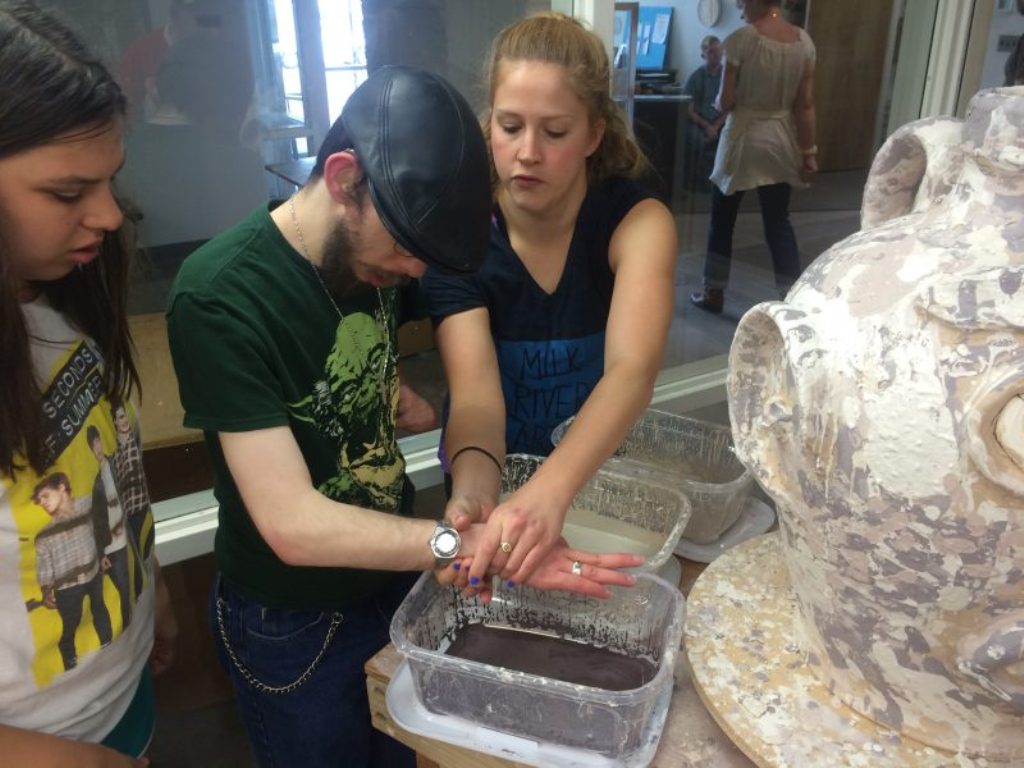
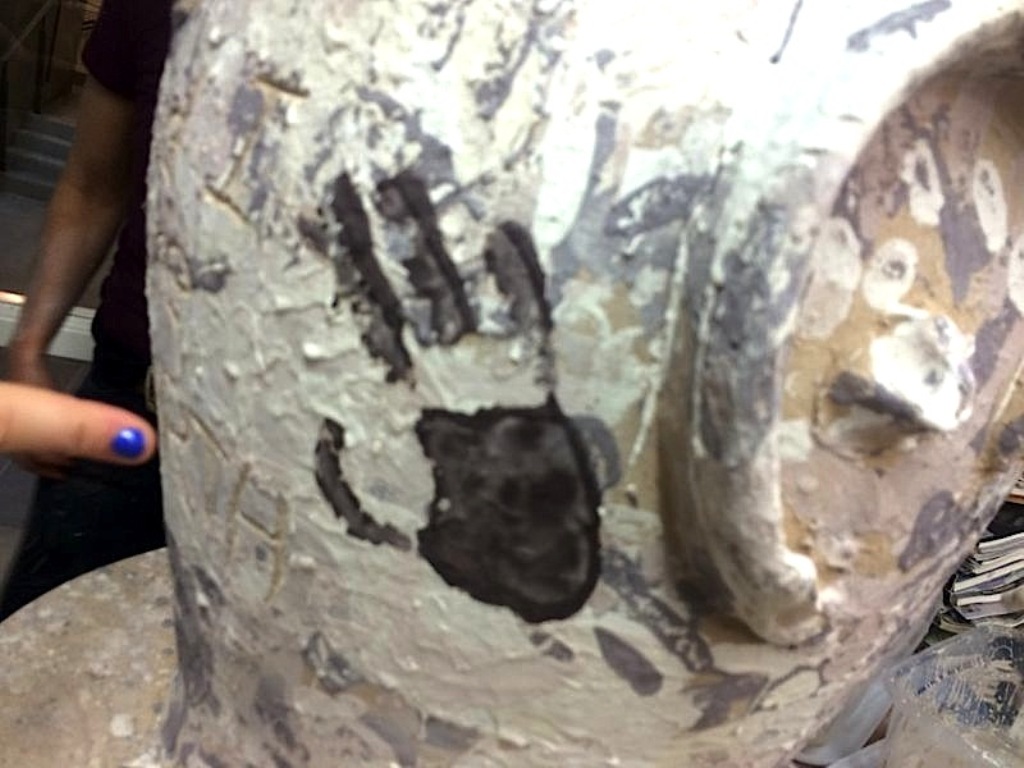
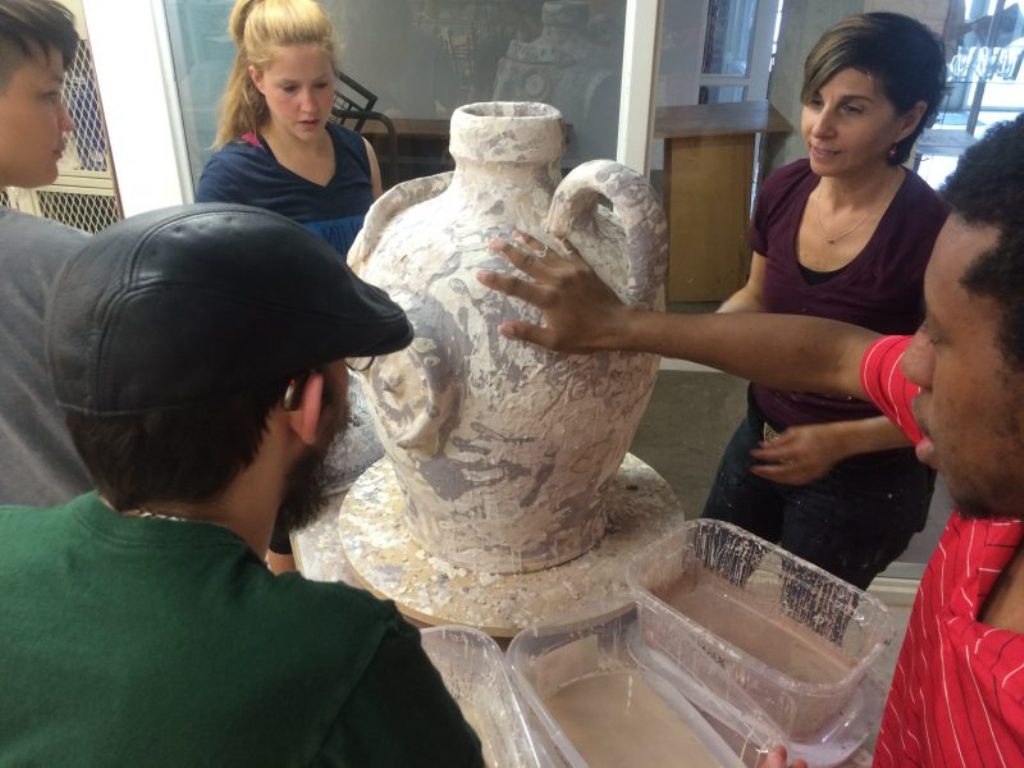
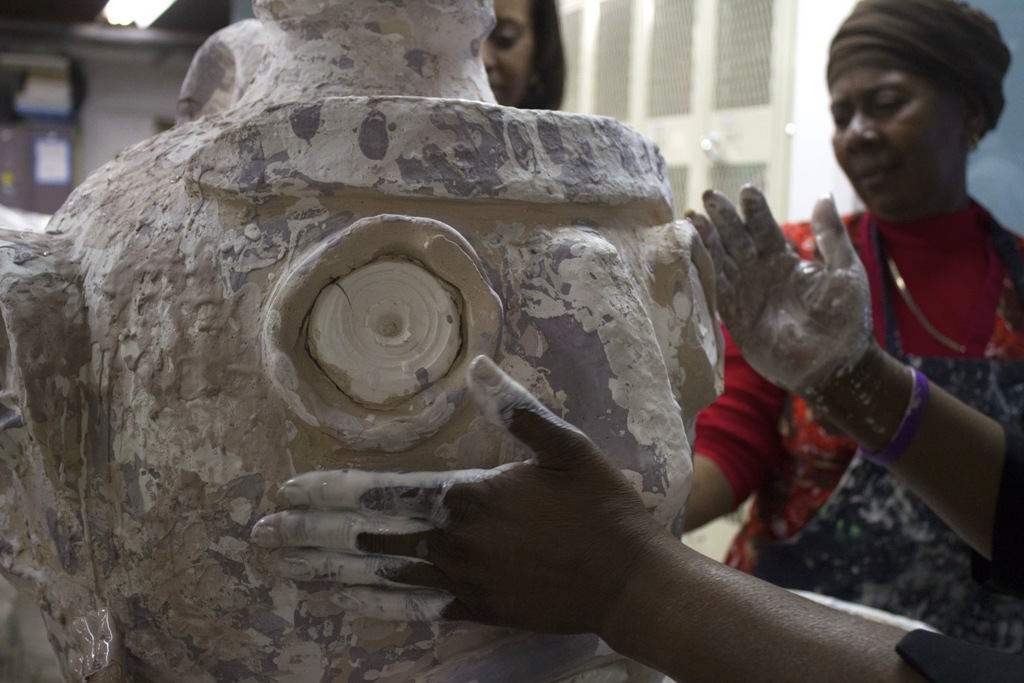

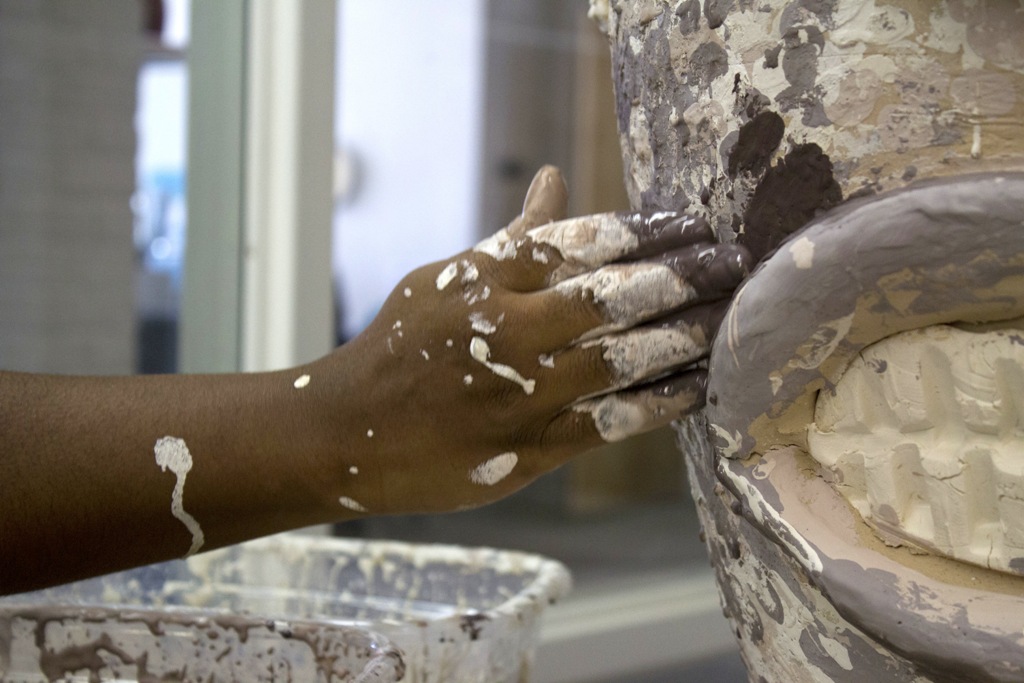
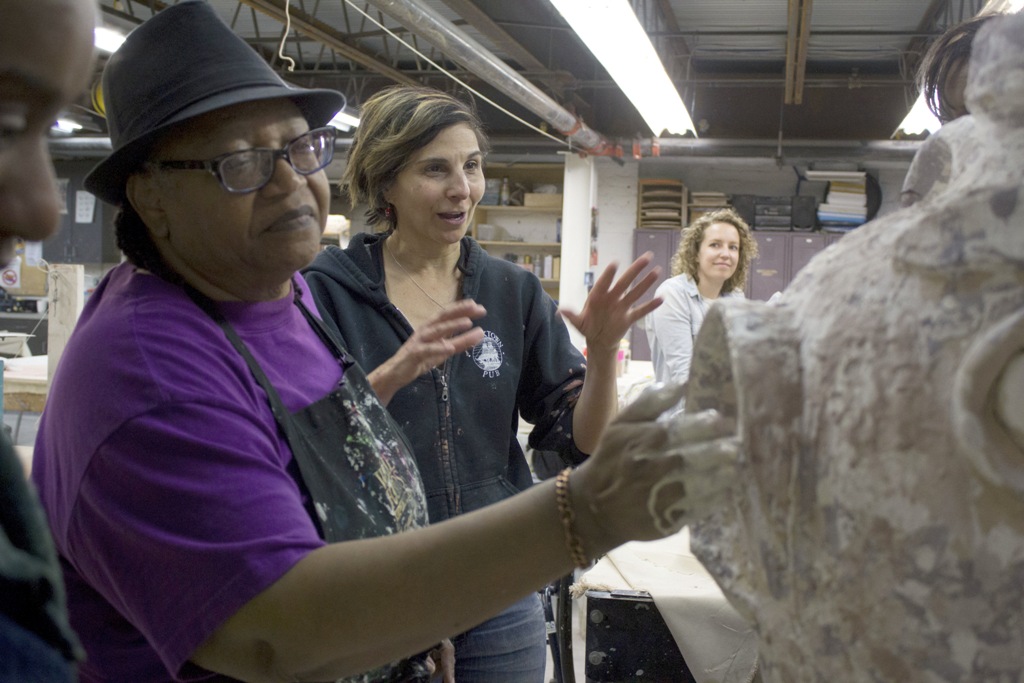
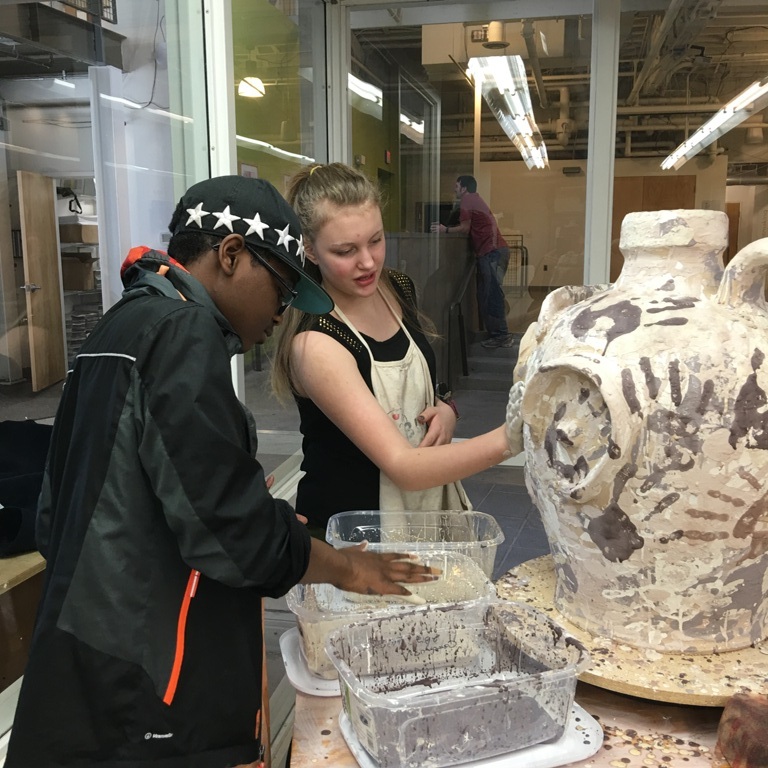
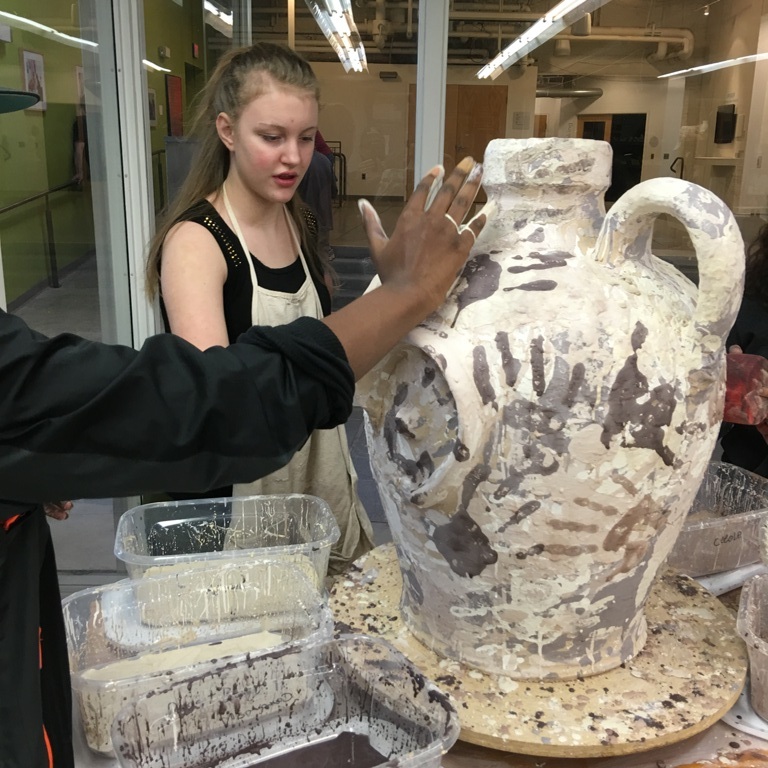


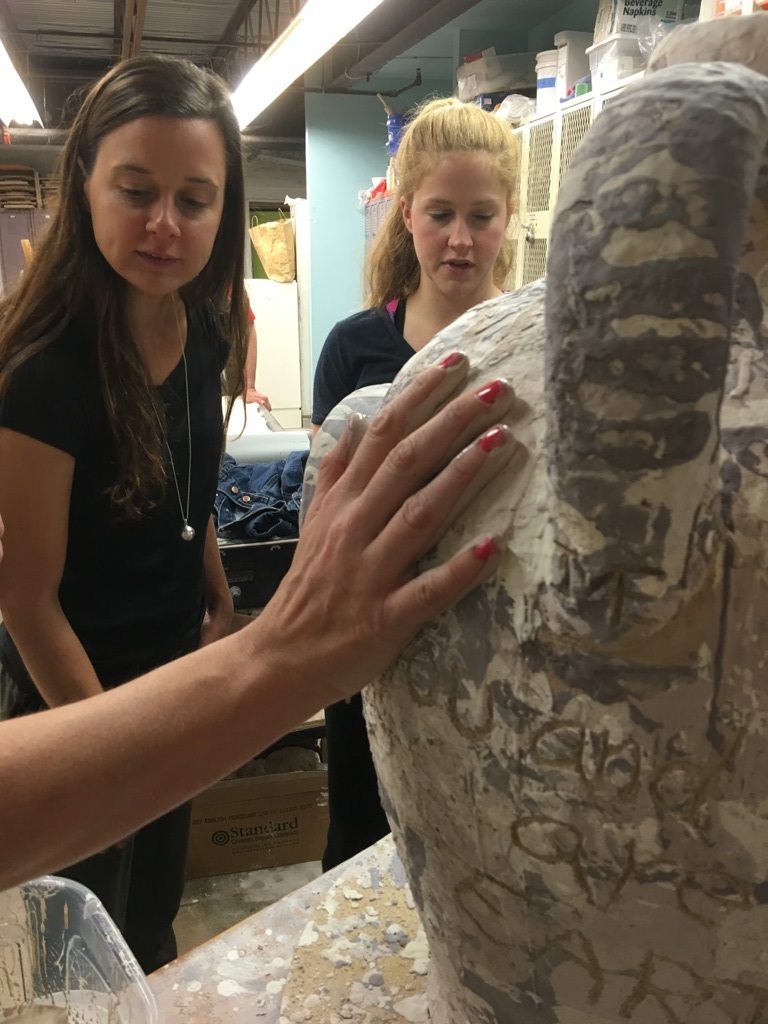

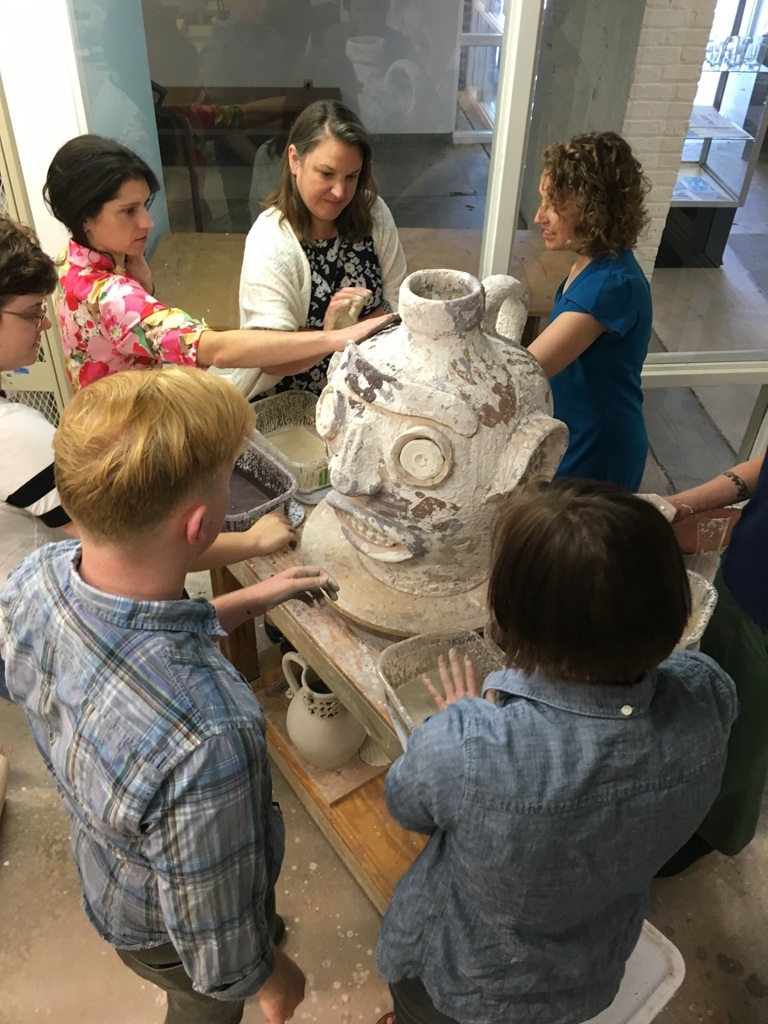
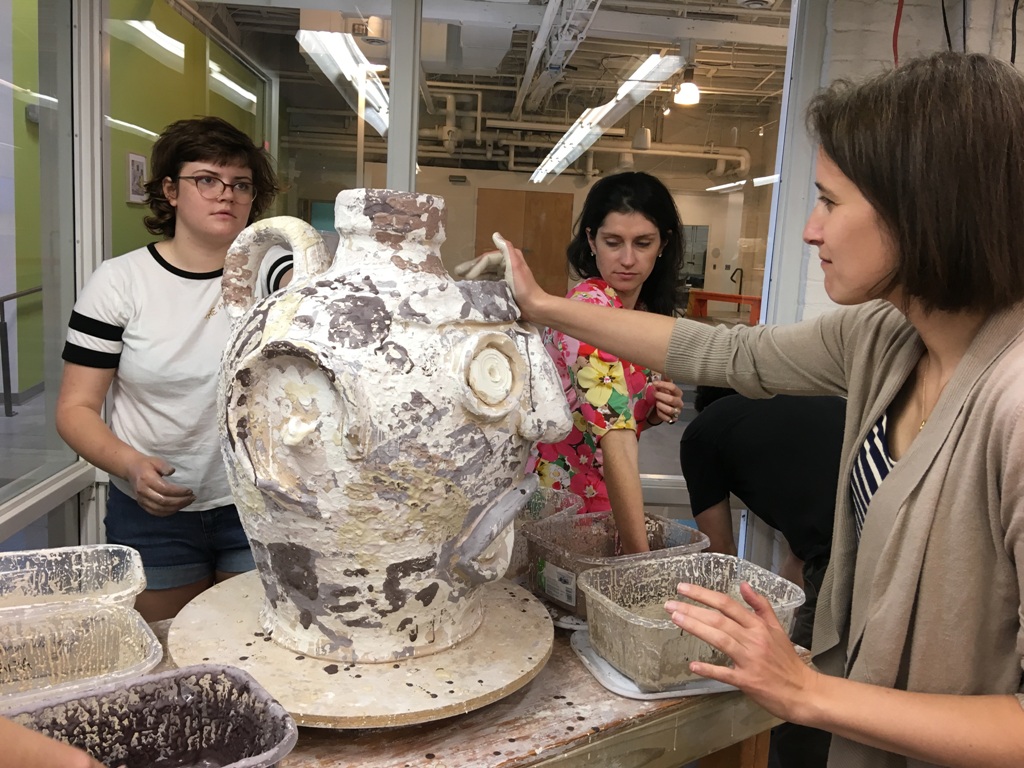
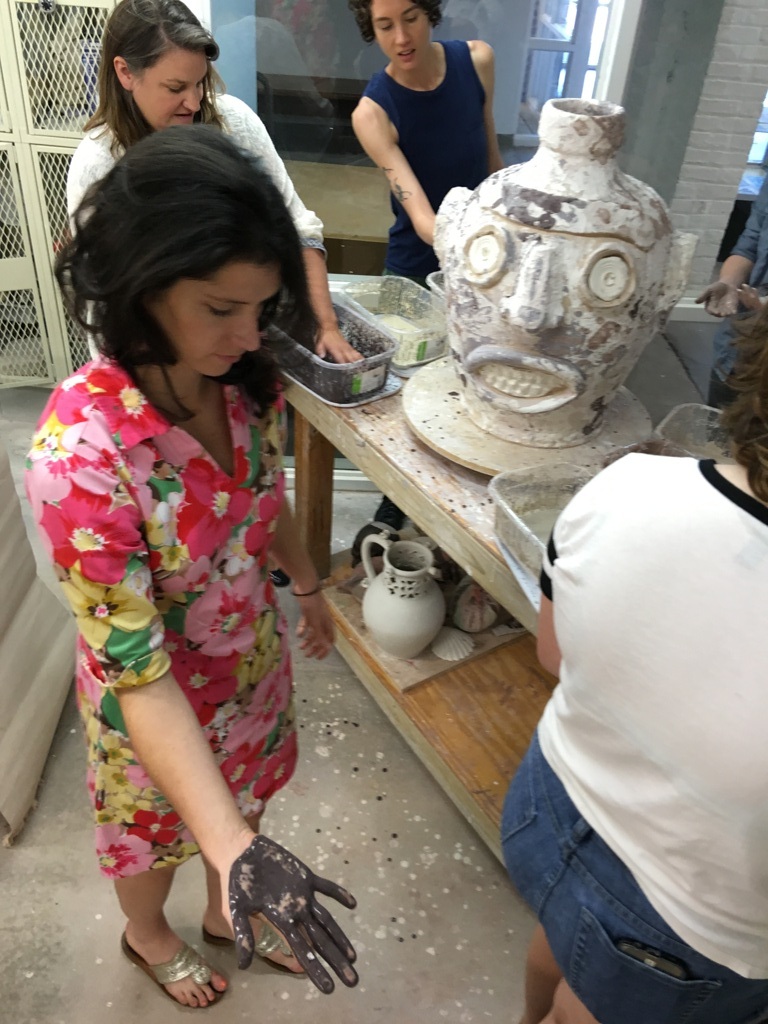
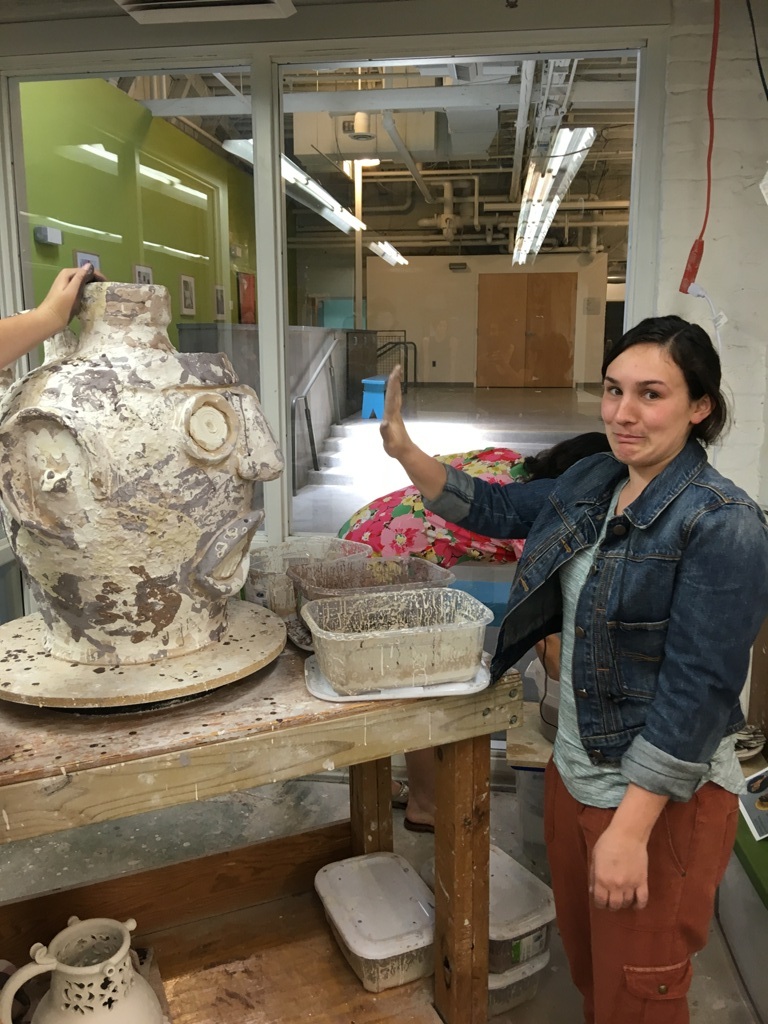
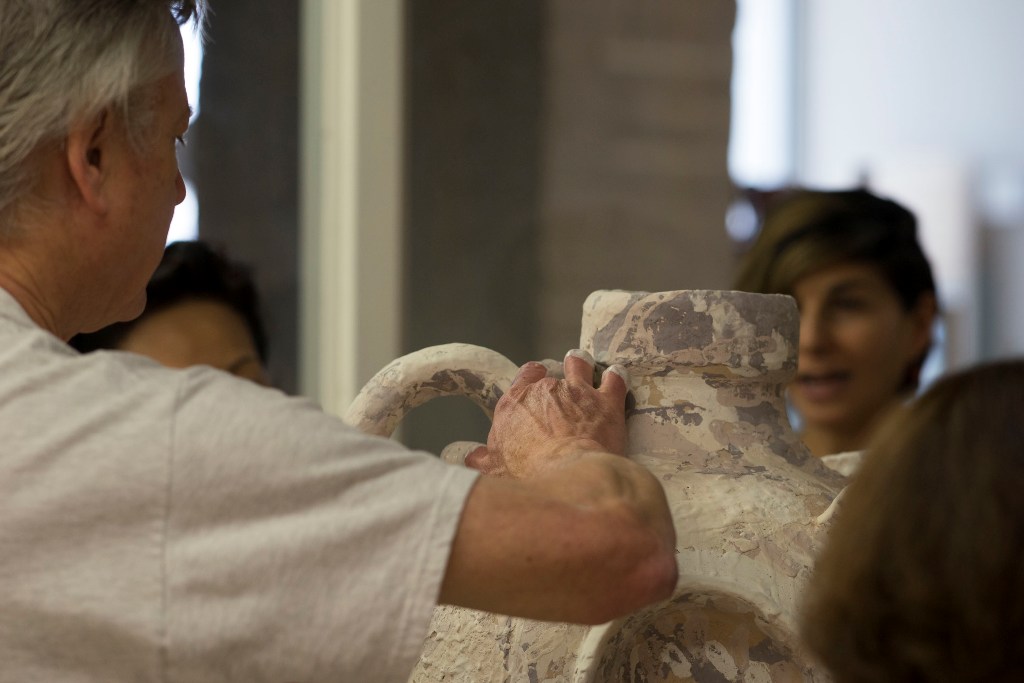
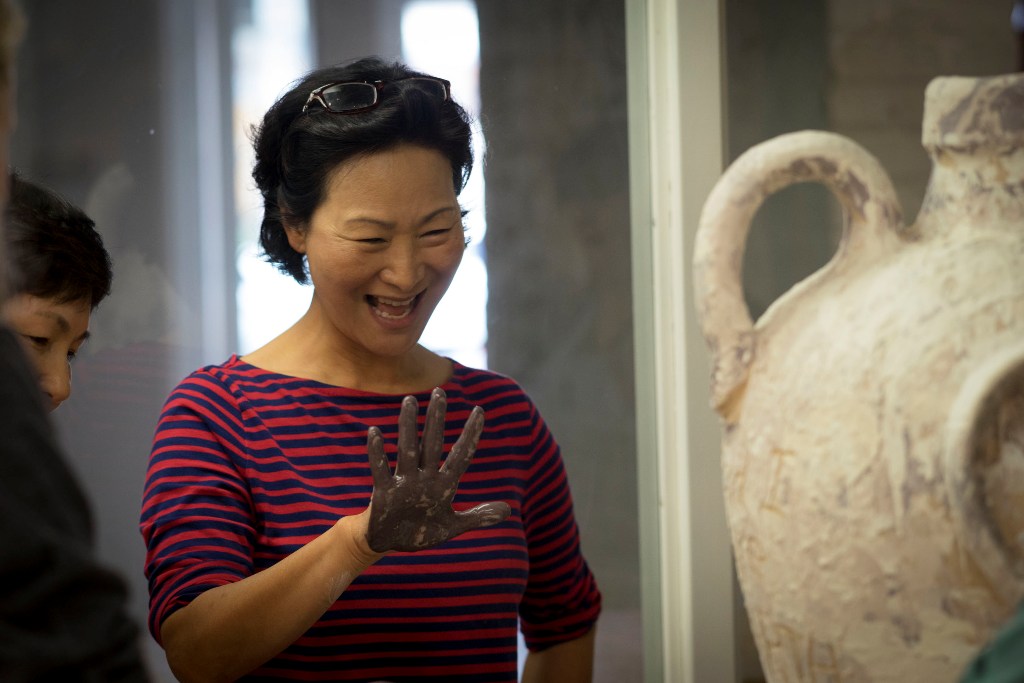
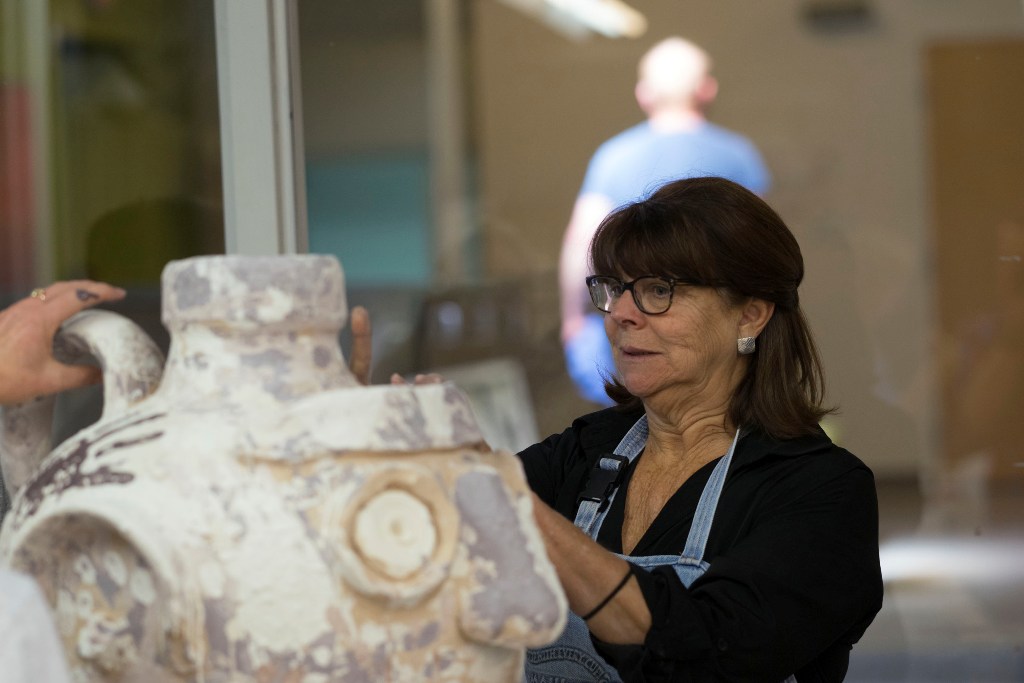
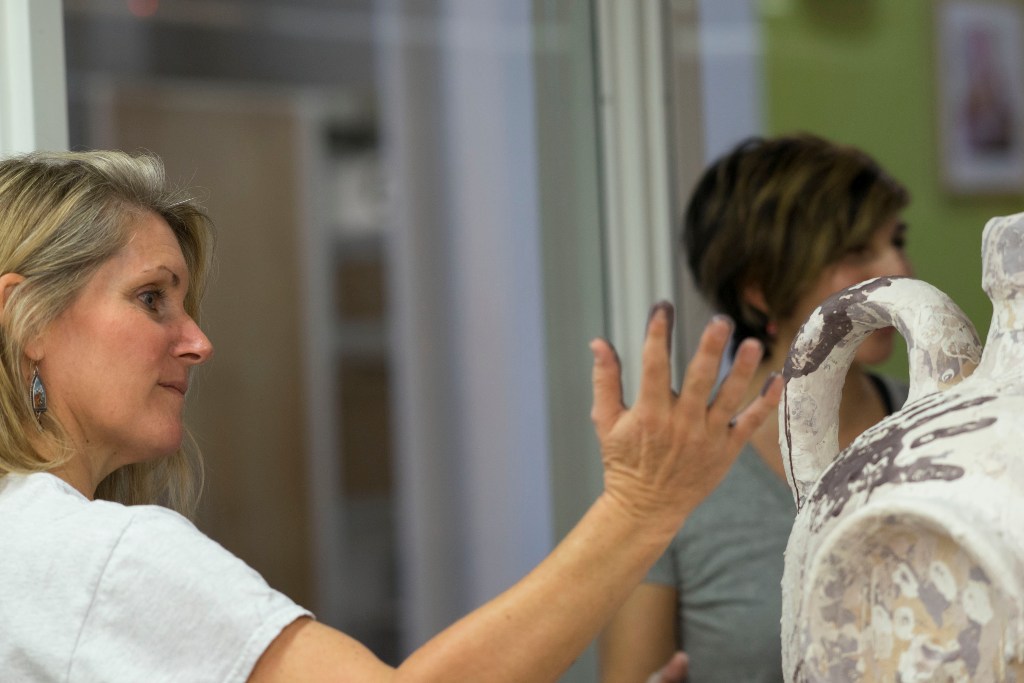
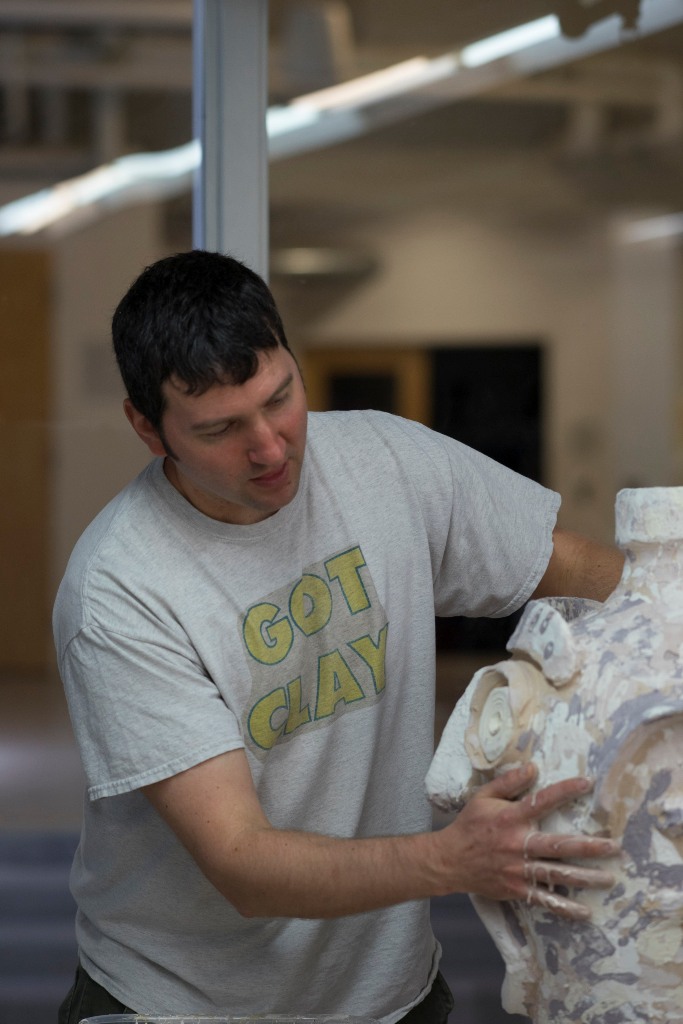
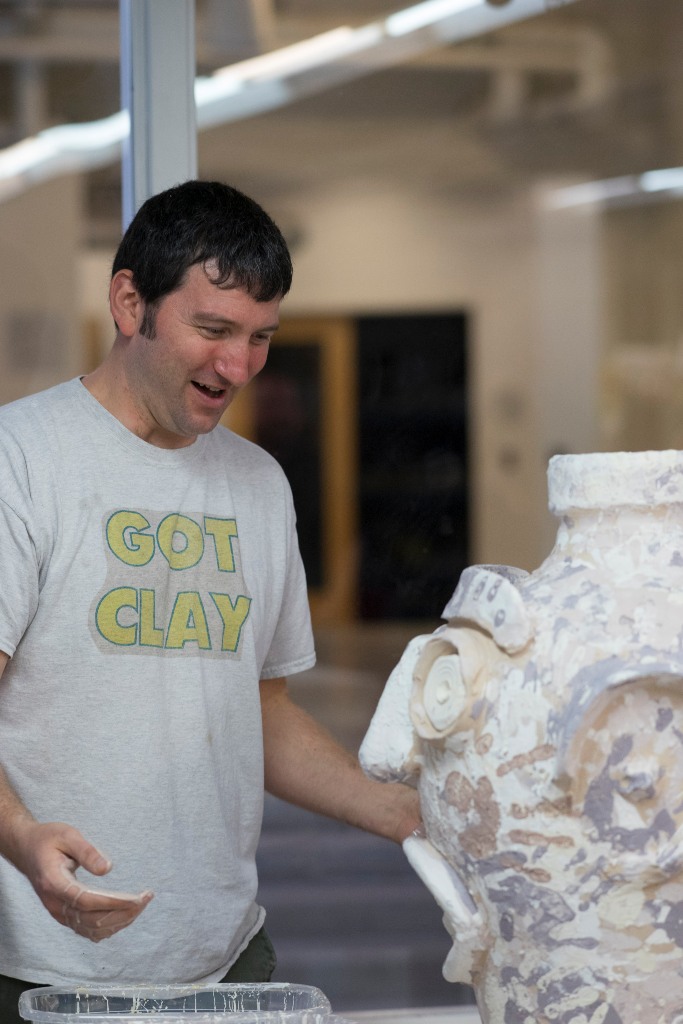

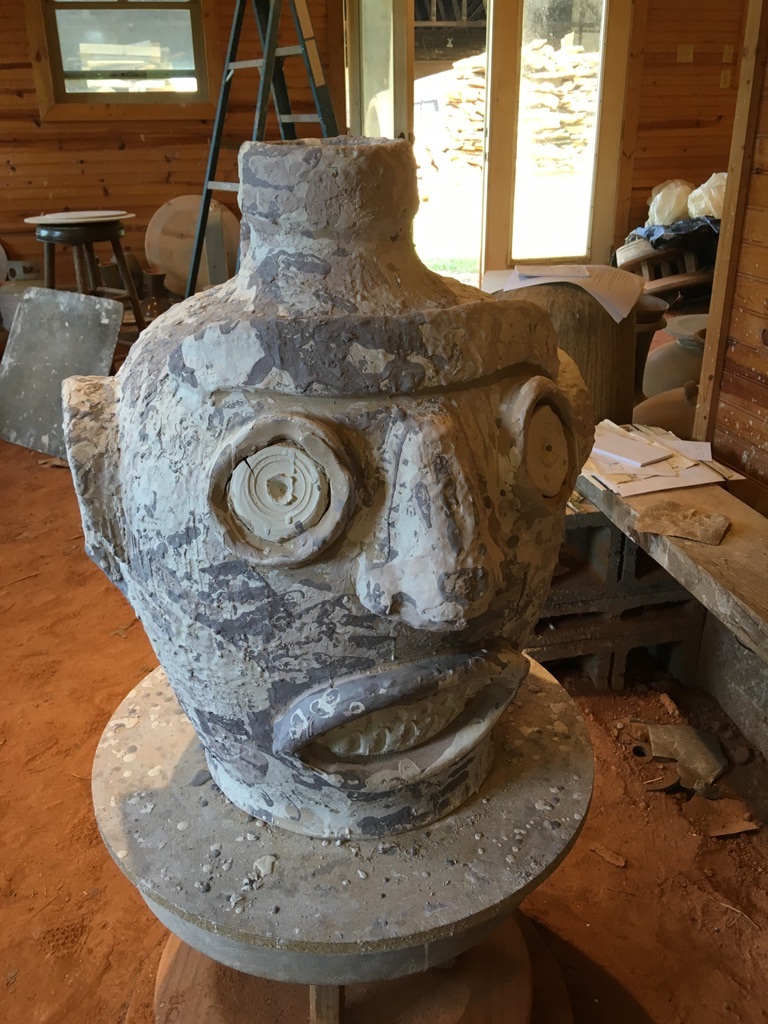
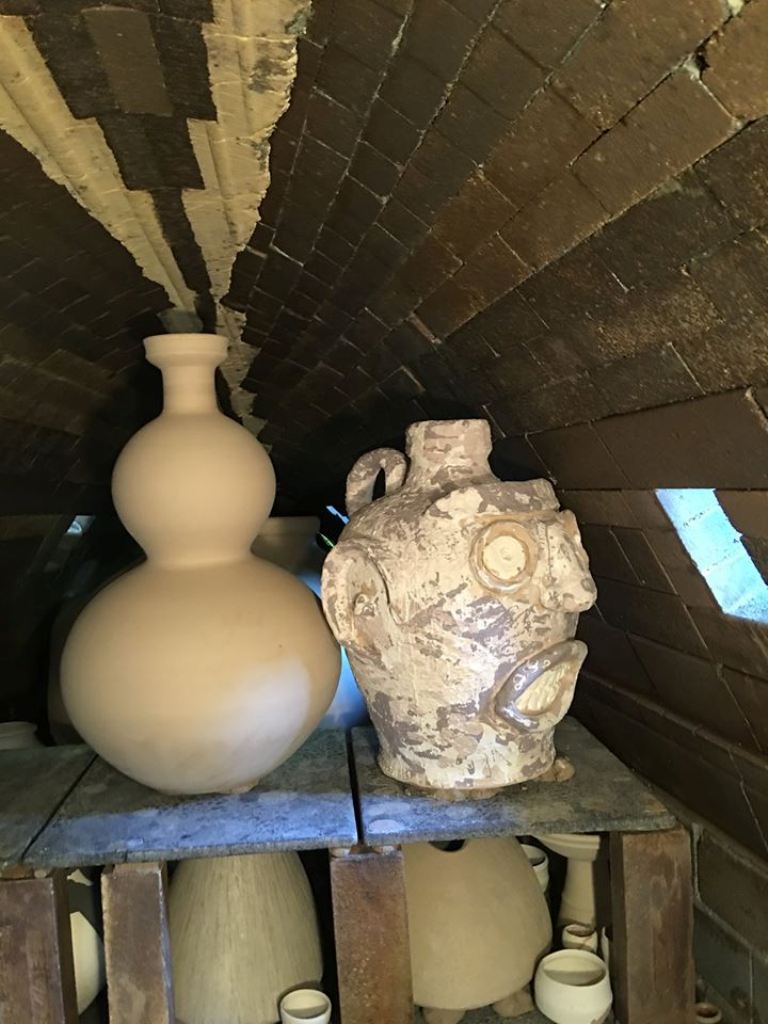
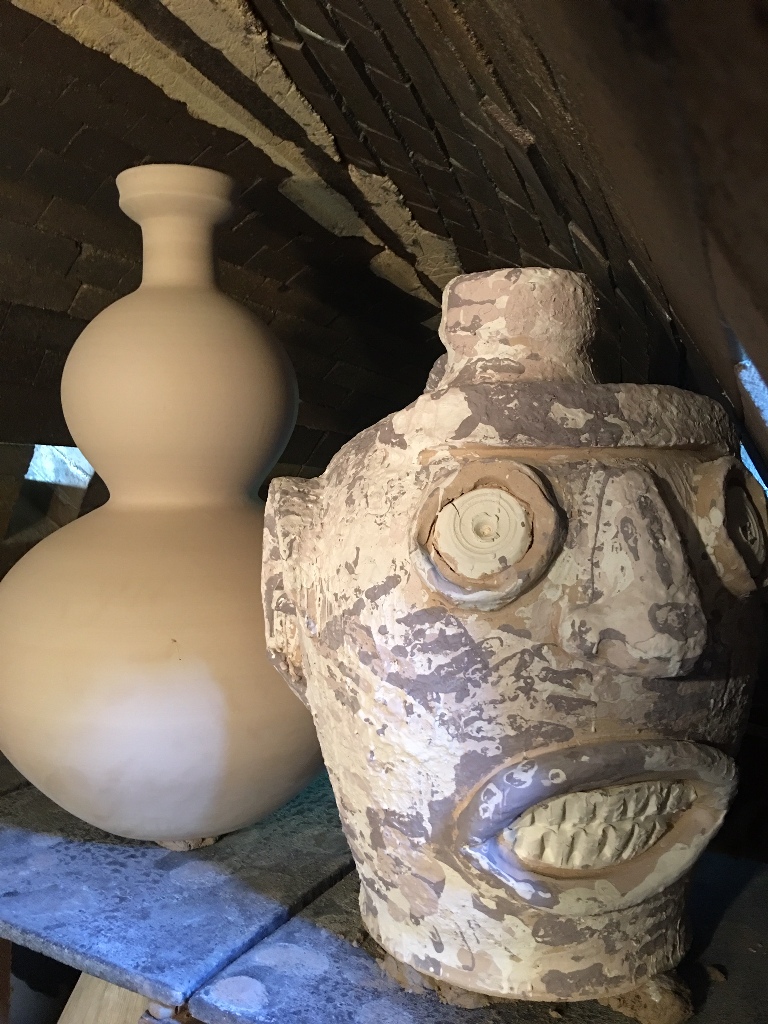
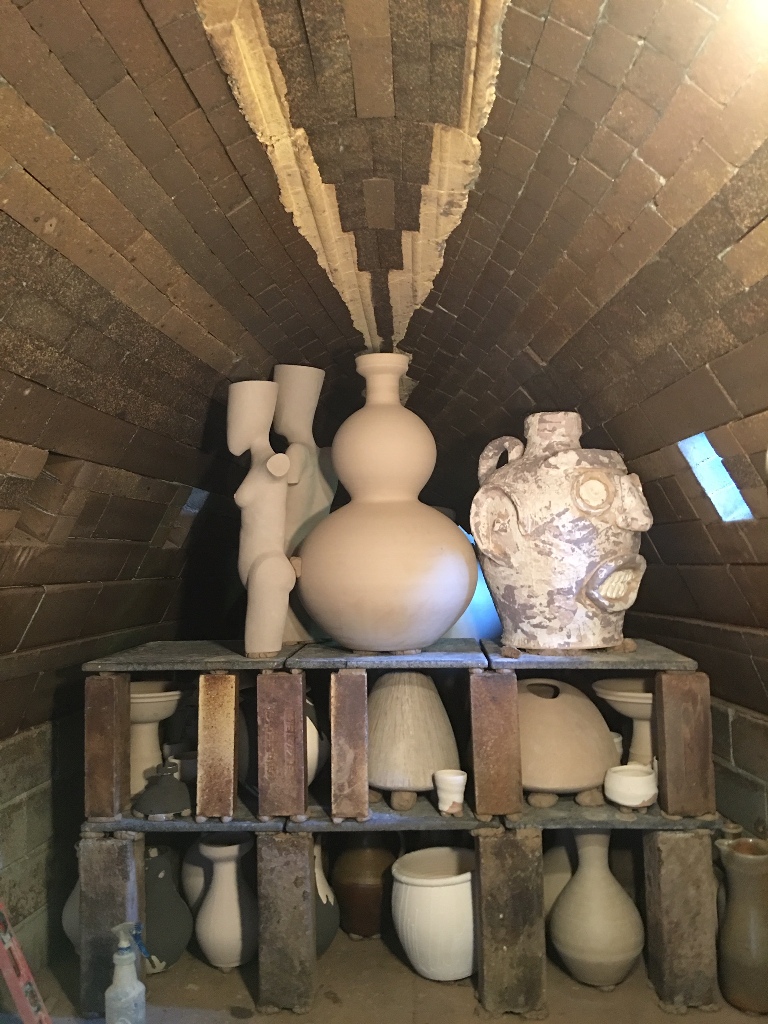
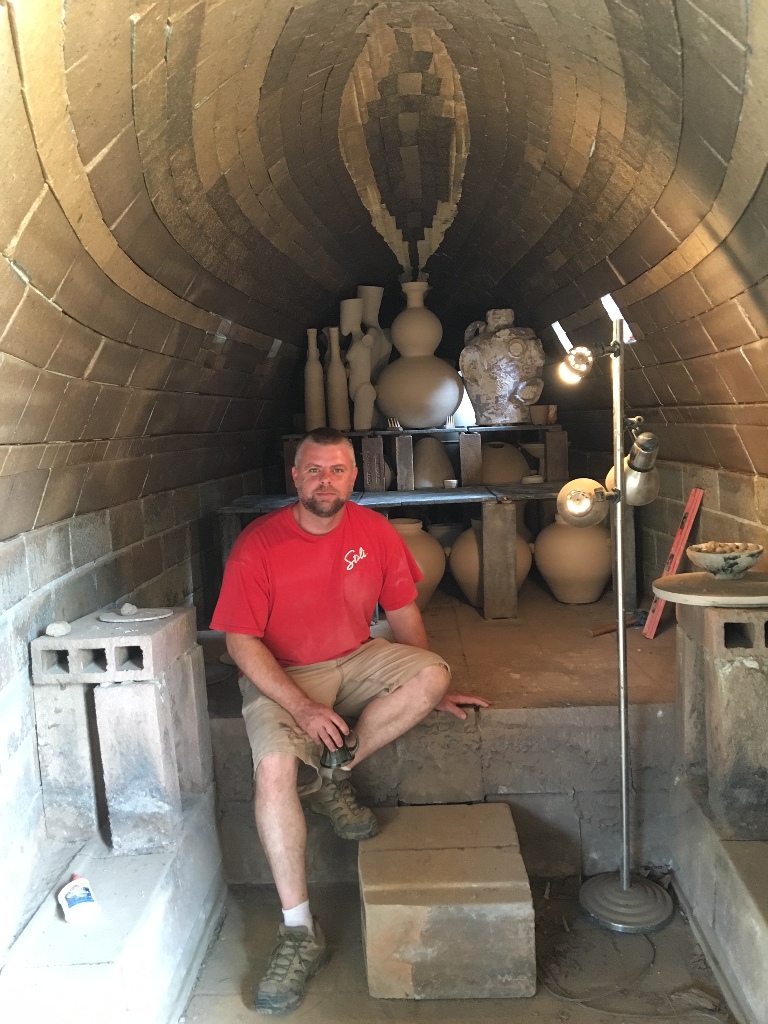
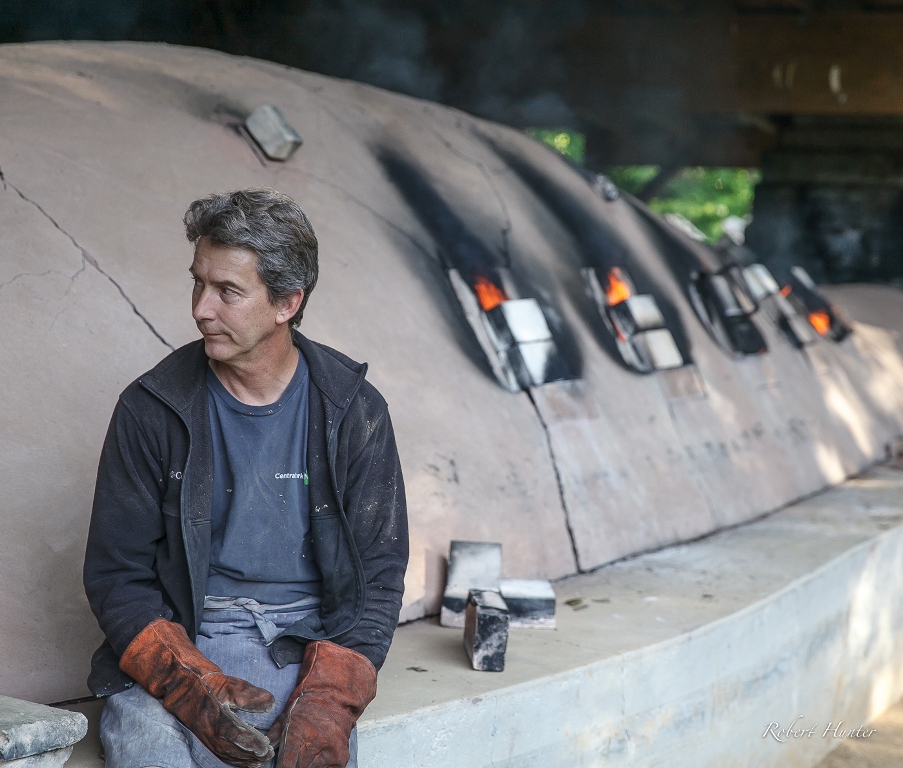
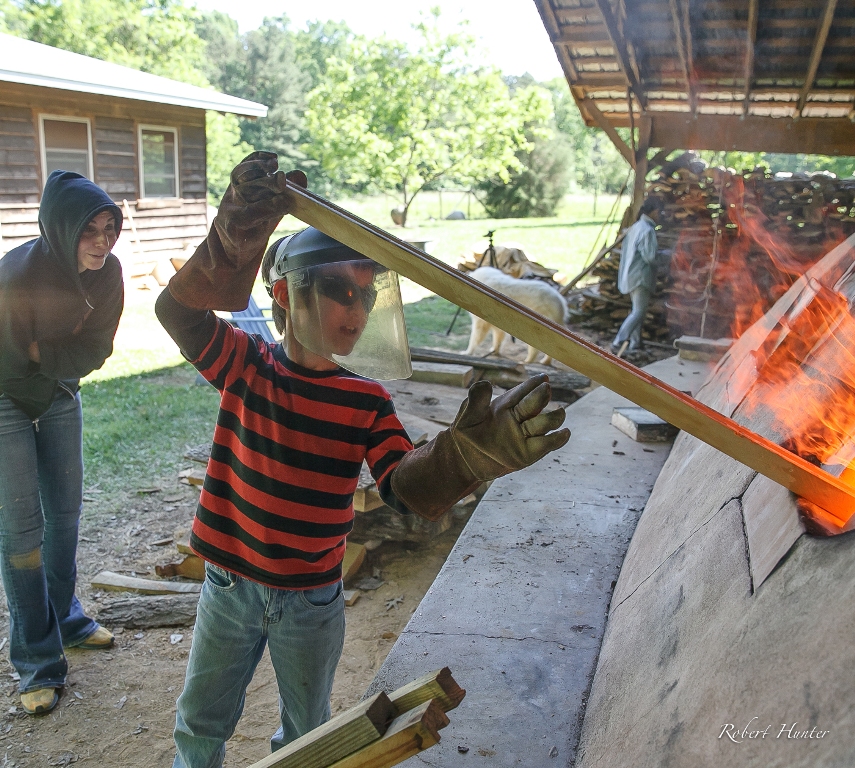

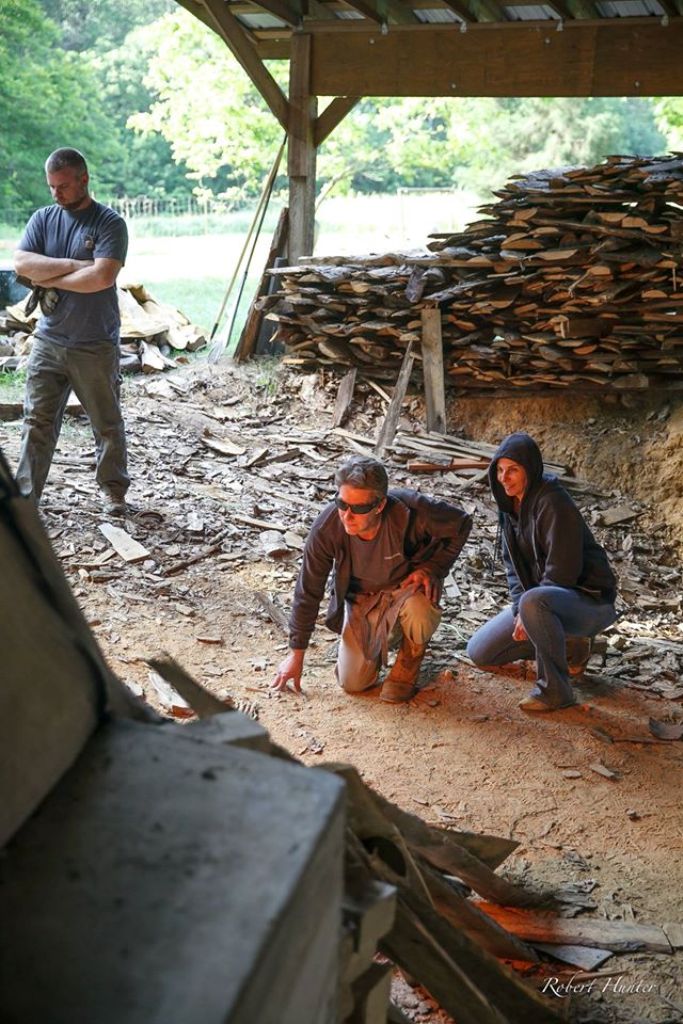

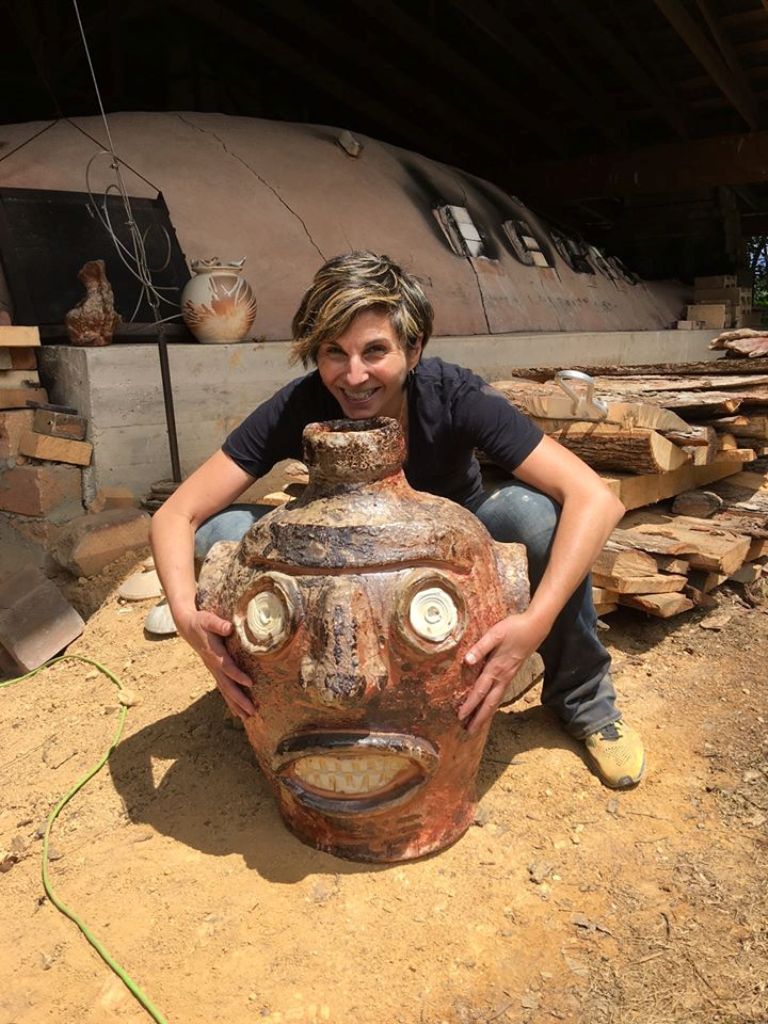
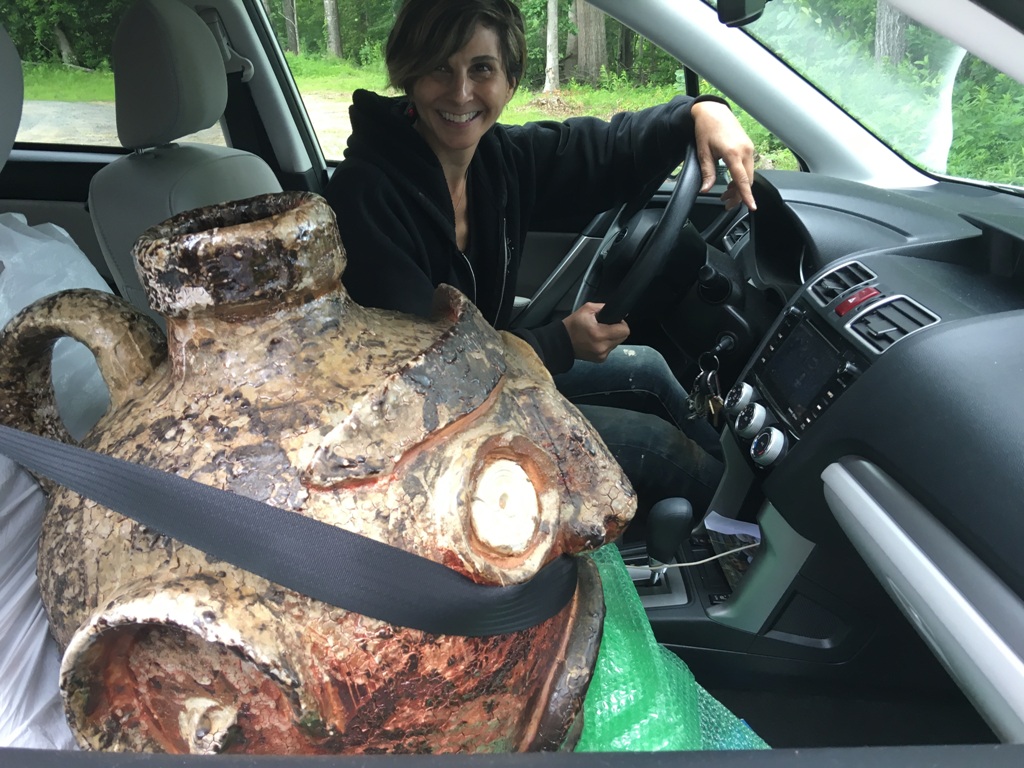
FACE JUG
Michelle Erickson 2016
Thrown, and hand built wood fired, salt-glazed stoneware.
Indigenous clay and porcelain ‘skintone’ slips; fired in collaboration with David Steumpfle.
H. 27”
The term “face jug” is used generically to reference pottery jugs with applied faces, notably with white kaolin eyes and teeth, that have become a staple in Southern folk pottery. The Face Jug Project was inspired by a specific group of 19th-century slave made pottery jugs from Edgefield, South Carolina. The purpose of these mysterious and powerful, intimate sized jugs is still unknown. Their small scale suggests a personal use perhaps associated with conjuring and African ritual practice. The alkaline glaze techniques that are characteristic of southern stoneware production are closely tied to Asian potting traditions rather than European traditions which dominated the early American salt-glazed stoneware of the Mid-Atlantic and North.
The project began with my creating a giant face jug during a workshop with North Carolina based master potter David Steumpfle at Orzo Studio in Portsmouth, Virginia. It subsequently travelled to Richmond, Virginia unfired to become the centerpiece for my artist residency at Visual Arts Center in Spring 2016. I wanted to take advantage of the incredible outreach and patronage of this vital inner-city art center to develop a communal project focusing on race in 21st century America. The diversity within Visual Arts Center was a perfect fit as people from all walks of life and experience come to create art for many different reasons. Veterans groups, disabled artists, summer students, inner-city youth, professional retirees - many whom are serious artists- who came through the doors brought many hands to the project.
I had been working with commercial porcelain slips produced for the china doll industry to imitate skin tones of various races. These somewhat suspect stereotyped race colored slips became the vehicle for engagement. The ‘skintone’ slips with names like creole, very white, Cameroon, desert beige and more were laid out in tubs for people to immerse their hands and create their handprints on the jug. This process built up layers of hundreds of hand prints creating thick, crusty surface of human interaction.
The jug was driven to Seagrove to be fired in David Steumpfle’s wood fire kiln. The kiln was fired for 5 days with continuous stoking by David and the other artists who work as the crew and take 8-hour shifts reaching a temperature of over 2400 F. The kiln was left to cool for another week. Although the face jug is relatively large, it was dwarfed by many much bigger pots in the firing and was affectionately named Jr.